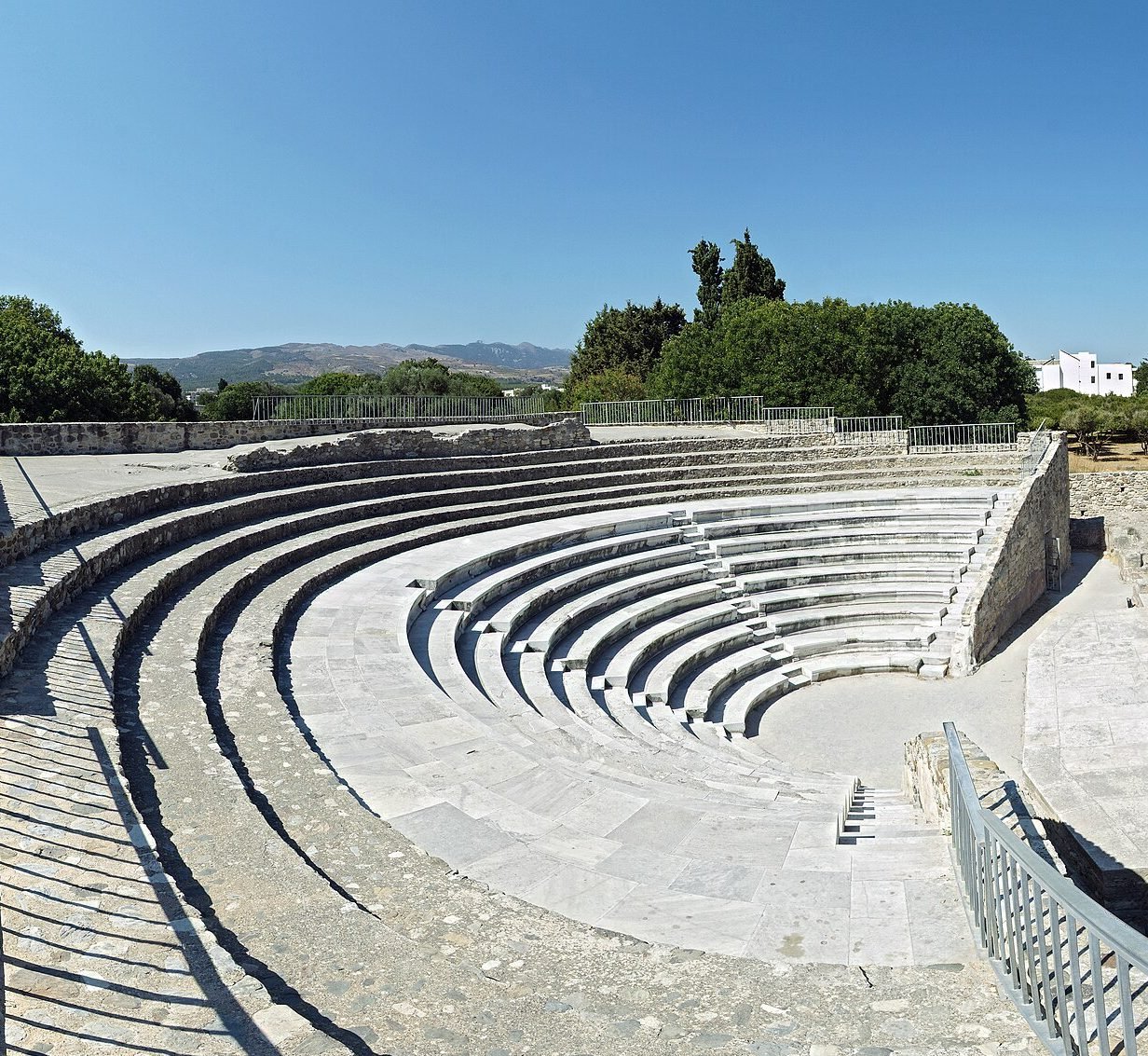The Roman Odeon of Kos stands in the center of Kos Town. It lies just a short walk from the Ancient Agora, Casa Romana, and the Western Archaeological Zone. Because of its location, visitors often include it in a half-day walking tour.
Roman builders constructed the Odeon in the 2nd century AD. They placed it over a former Greek council chamber. Later, Emperor Antoninus Pius repaired it after an earthquake. Italian archaeologists began excavating the site in 1929. In the 1990s, Greek authorities restored the upper seating area.
The Odeon served both artistic and political purposes. Citizens gathered here for music, speeches, and competitions. During the Asklepieia festival, locals attended poetry and music contests. The site also supported Kos’s cultural identity under Roman rule.
The theater could seat about 750 people. It featured 14 rows of stone seats arranged in a semicircle. The first nine rows used local marble. High-status guests likely sat in the front rows, while others filled the upper seats. Beneath the seating area, two curved corridors create hidden passageways. Workers once used these spaces for storage and preparation.
Several marble statues once stood in arched wall niches. One important find included a statue of Hippocrates. That statue now sits in the Archaeological Museum of Kos. It connects the site to the island’s legacy in medicine and public life.
Entrance to the Roman Odeon of Kos is free. The site opens daily from 08:30 to 15:30, except on Tuesdays. Informational signs appear in both Greek and English. Trees and benches line the path, offering comfort during summer heat.
Additionally, summer performances take place at the Odeon. Local artists present music and theater on the original stage. These events bring ancient tradition into the modern age.



Comment (0)